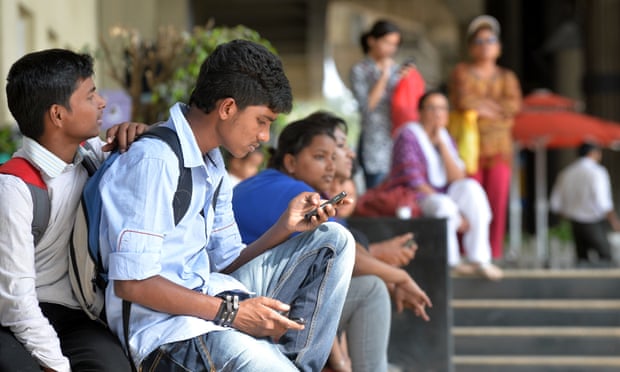- UID
- 20
- Online time
- Hours
- Posts
- Reg time
- 24-8-2017
- Last login
- 1-1-1970
|
As mobile markets in developed world near saturation, Google rolls out Neighbourly, its first Indian-inspired social network.

With 330m smartphones, India is considered an especially lucrative mobile market. Photograph: Manjunath Kiran/AFP/Getty Images
▼ To check Instagram at home, Laveena must stand on the edge of her terrace, arm outstretched, hoping the signal is strong enough for her phone to blink to life.
A few times a day, she grudgingly shares her phone with her little brother, so he can speak to his friends on the WhatsApp account they share.
Like most Indians, the university student from Jaipur, in Rajasthan state, frequently runs out of storage on her phone.
As Laveena explains these challenges, a team from Googleis sitting in her living room scribbling notes. To the world’s largest technology companies, the digital habits of a 22-year old Indian woman matter more than ever.
With the mobile market in developed economies nearing saturationpoint, technology giants such as Google, Facebook and Amazon are turning to large and fast-growing markets in Asia and Africa.
India is especially prized, simultaneously home to the second-largest number of smartphones in the world – more than 330m in circulation – and the world’s largest offline population: more than 1 billion peoplein 2016, according to the World Bank.
“We think the future of the internet looks like the next billion users,” says Josh Woodward, a product manager at Google, whose team looks at future trends in smartphone use.
“We ask ourselves: if you were designing for Mumbai, not [Google’s headquarters in] Mountain View, what would you build?” he says. (▪ ▪ ▪)
► Please, read the full note here: Source |
|